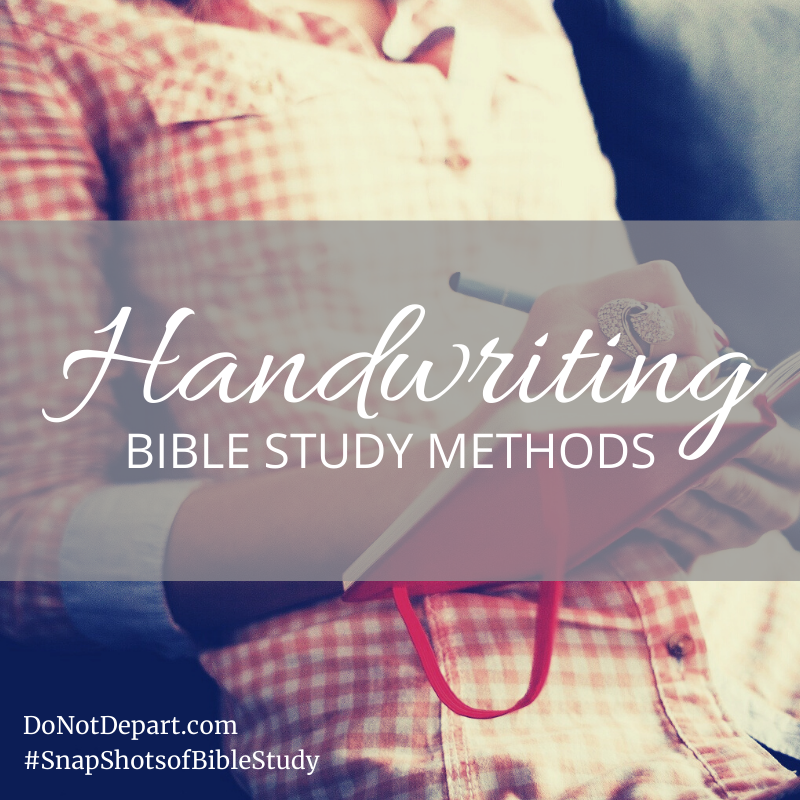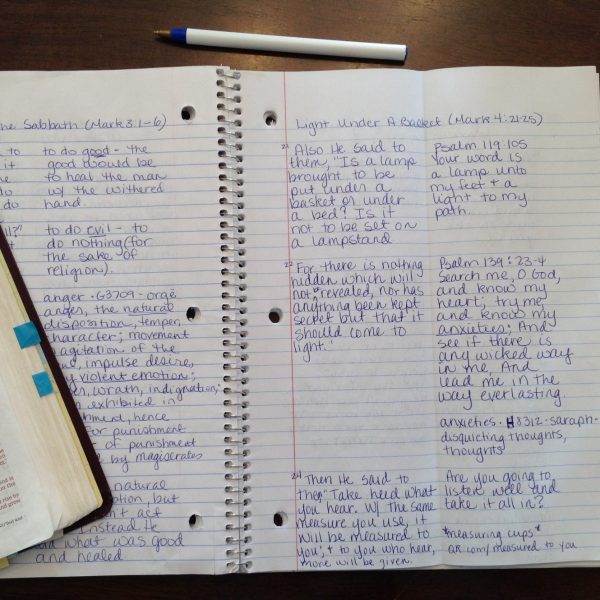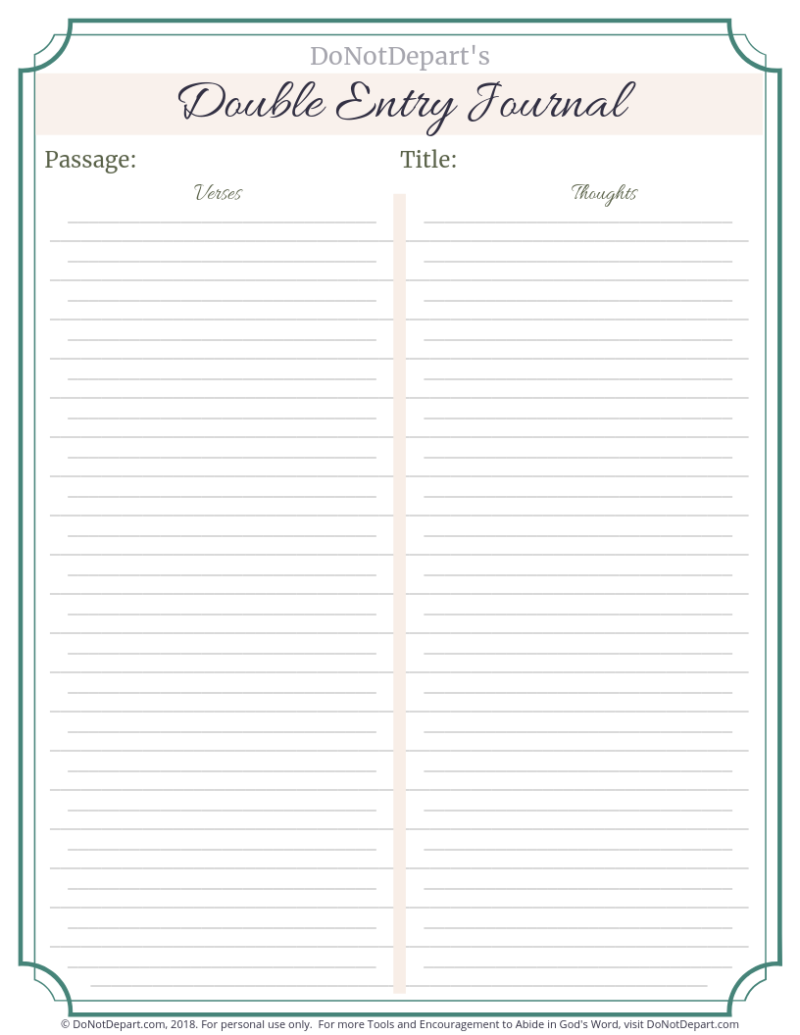Welcome to Do Not Depart! Be sure to subscribe to the Do Not Depart RSS feed or email updates to receive regular encouragement and tools to abide in God's Word.
This month in our Life Long Learners series we have been giving you a glimpse of how we each study God’s Word. If you’ve been following along with the series, I’m sure you gleaned an awesome tip or two. You’ve probably noticed that our methods of study vary greatly from person to person. Today I’m going to share my favorite study methods and tools. You ready? All you need (other than your Bible) is a pen and a spiral notebook. Yep, that’s it — nothing fancy! Better yet, no WiFi required! Here’s how.

Handwriting the Word
One of my favorite ways to take in God’s is to write it out by hand. It is a slow process. I’ve been handwriting the Psalms for nearly two years, filled up multiple notebooks, and I’m still not done. That said, taking time to handwrite each verse helps me slowly savor and digest God’s message.
When I do nothing more than read a passage, I am likely to read too fast and even more likely to miss the intended message. However, when I handwrite God’s Word I am forced to think about each verse, word by word and letter by letter. As I slowly write, my mind has more time to consider the meaning of the verses and think about how God wants me to apply them to my life. It is even a slow enough process that I can pray as the pen moves across the paper. Handwriting God’s Word has become a ritual that I enjoy and look forward to each morning.
Double-entry Journal
I also like using a spiral notebook to keep a double-entry journal. Keeping this type of journal involves handwriting God’s Word, but it takes it a step further and allows me to record my thoughts, questions, and prayers; it gives space to record word study notes (see Lisa’s post from last week) and cross reference to other passages in the Bible.
I most often use this methods of journaling when I’m beginning to write a bible study or blog series. I also use the double-entry journal when I’m preparing to teach a group study or children’s church. I frequently use it for personal Bible study as well.
Here is how it works:
Want to give it a try? Here’s how:
- At the top of a blank page write the passage and passage title you are studying. You may also want to include the date for future reference.
- Without removing the page from the notebook, fold the page in half lengthwise. You can draw a line down the crease if you like. Now you have two columns on your page.
- In the left column write out word-for-word the scriptures that jump out at you. There is no need to write the entire passage unless you just want to.
- In the right hand column, next to the scripture, write out your thoughts, questions, other scripture references, song lyrics, word studies, or anything else you think is relevant to the scripture.

If you are not feelin’ the handwriting thing, you could always type a double entry journal. In your prefer word processing software (Microsoft Word, Apple Pages, etc) you would insert a two column table and then follow steps 3 and 4. You can also download this printable from a post I shared last year during our Bible Study Notebook series.
Like with handwriting God’s word, using a double-entry journal encourages you to slow down and meditate on God’s word. It also helps you to connect what you are currently reading to your prior knowledge of the Bible. Both study methods, handwriting the Word and double-entry journaling, help you to know, understand, and remember Scripture. They also help you to think about your thinking and refine what you believe about God and the Bible.
Like I said earlier, everyone studies in a different way. All this handwriting may not be for you. However, if you are looking for a simple, no fuss (and no WIFI needed) way to dig deeper into God’s Word, I encourage you to give one (or both!) of these methods a try.
Only by grace,
Kelli


Love this. I have all kinds of tech for organising information, and I’m always tweaking, customising, and trying out new tools —none of it is exactly right, and I always come back to pen/pencil and paper. It is the best technology — basic A5 spiral notebook and four-colour biro. I really like your double-entry idea to have text and reflection side-by-side. There’s a lot you can do with a page — and you don’t need to work out what to click or drag or read a manual.